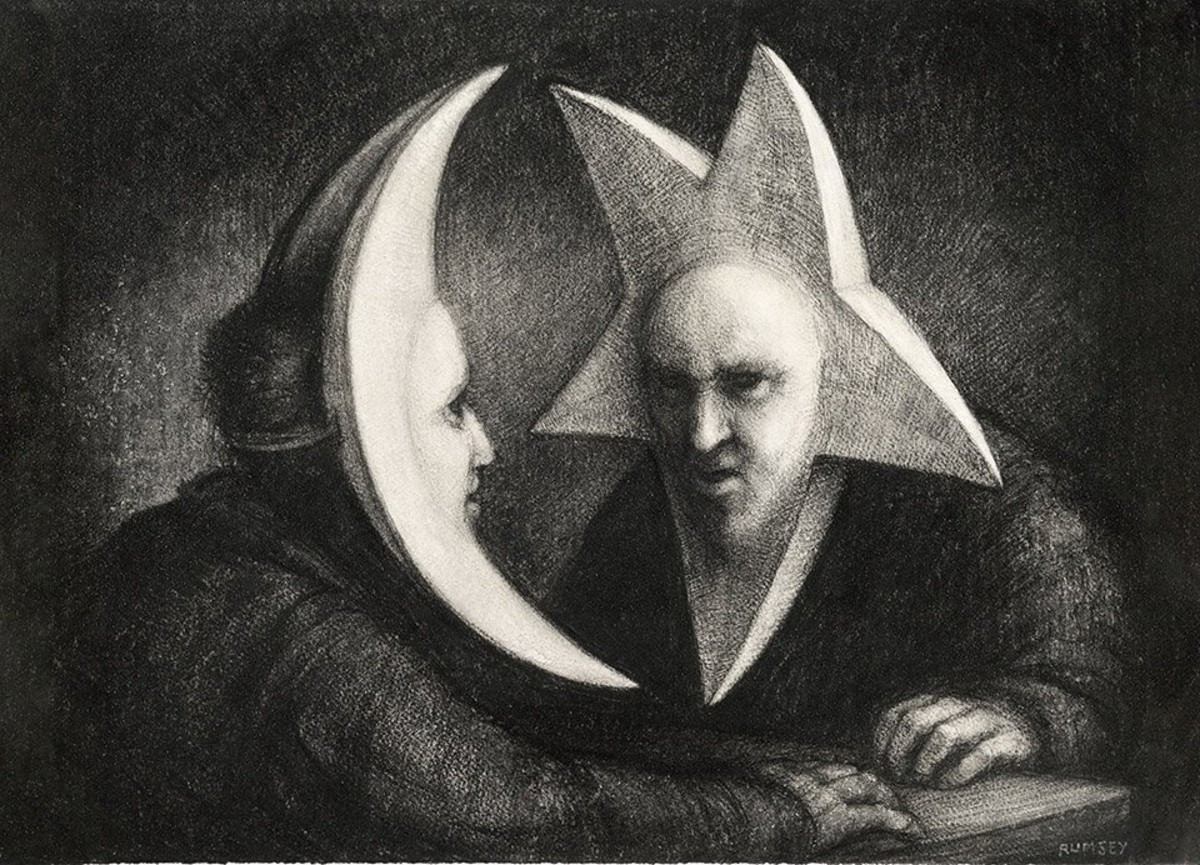 Submitted by Orias on
Submitted by Orias on

‘Conversation between the Moon and a Star’ by Paul Rumsey - https://hyperallergic.com/659189/visual-history-astrology-library-of-esoterica-taschen/
I recently read a book review on astrological art in TASCHEN’s The Library of Esoterica, Astrology, Vol. II and am giving it a share for educational and informational purposes here as I found it fascinating. History of any kind is nothing without art. ~ Orias
*****
Introduced in Mesopotamia some 2,500 years ago, astrology continues to fascinate poets, writers, and artists. Since the dawn of humanity, cultures around the world have looked to the sky in search of meaning and a better understanding of the self. This cosmological fascination birthed astrology, the most ancient of all esoteric practices. Introduced in Mesopotamia some 2,500 years ago, it still holds its appeal, continuing to fascinate poets, writers, and artists. From its ancient origins as astronomy’s sister science to our current Age of Aquarius, astrology has been supported by a rich visual culture.
From prehistorical celestial sightings found in the 20,000-year-old Lascaux Cave paintings in France, works of art from the Chaldeans of Babylonia, ancient Egyptians, Greeks, Romans, Persians, and Arabs, modern and contemporary artists highlighted include Hilma af Klint, Alphonese Mucha, Arpita Singh, Manzel Bowman, Lu Hong, and many others. All of these works are arranged to mirror the movement of the planets and the wheel of the zodiac.
For centuries, astrology was synonymous with astronomy: The King’s Chamber of the Great Pyramid at Giza was built to align with constellations; Persian scholars created some of the first observatories; and even Galileo, the father of modern physics, cast horoscopes for the Medicis. With the advent of the Age of Enlightenment in the 17th and 18th centuries, astrology was cast out from science to literature and art, influencing the likes of William Blake and Johann Wolfgang von Goethe.
“Astrology, whether perceived as a science, an art, a psychological tool, or a mass folly, has resonance and relevance to humankind,” writes Andrea Richards. “It has inspired worship as a divinatory practice, with its practitioners changing the course of historical events; it has altered our understanding of our deepest selves and human possibilities.”
Immersed as we are in technology, astrology has seen a mainstream revival in recent years. With varying levels of belief, many of us remain drawn to the notion that the movement of celestial bodies could affect our terrestrial lives. Be it an outcome of these times of uncertainty or a way to cope with the angst of living, it’s clear that astrology gives us something that science and technological advancement can’t.
But for those who count on the stars to reveal their future to them, Astrologer Susan Milller includes an important reminder: “This is a good time to mention that there is no fortune-telling or predestination in astrology, only influences that you can choose to take advantage of (or in the case of adverse aspects, prepare for) as they come up.”
Images from TASCHEN’s The Library of Esoterica, Astrology, Vol. II:

William Law, “The True Principles of All Things” from the Works of Jacob Behmen, Vol. 3, Germany/England (1764)

Vladimir Manzhos Waone, “The Magus” (2012–14)

Lu Hong, “Aquarius” (2019)
 \
\
Meagan Boyd, “Libra Cusp” (2017)
Hakim Bishara - https://hyperallergic.com/659189/visual-history-astrology-library-of-esoterica-taschen/
- 1212 reads